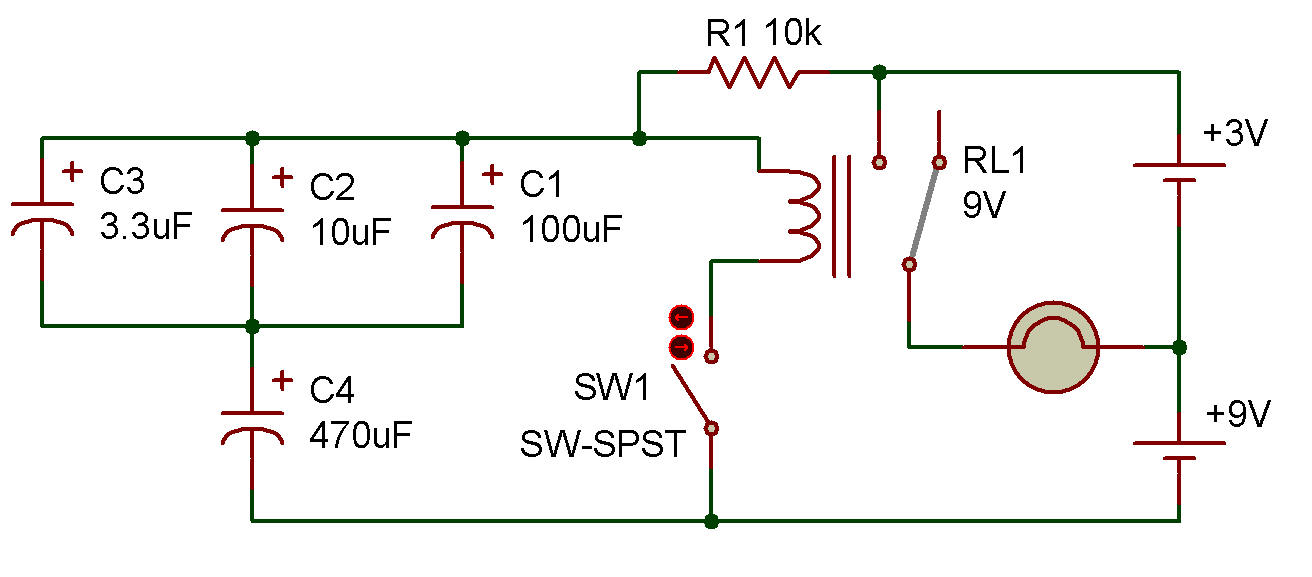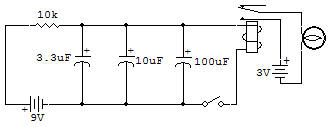

Relay Light Flasher

Light flasher circuits are used in many places. Can you think of some?
How about warning lights on barricades at highway danger or construction sites, flashing lights at a school crossing or a dangerous street intersection, and the turn signals on a vehicle. All of these use a circuit very similar to this one. This project is a Relay light flasher which demonstrates some aspects of Capacitors and Relays which are of interest.
The circuit is simple but the concepts are basic to the understanding of many electrical circuits. The Relay voltage is supplied from a 12V Battery but through a series 10K Resistor and across a total capacitance of 91.3uF see Capacitors in Series and Parallel in Capacitor Section .
This supply circuit has the following characteristics:
The current which can be made to flow through the 10K as a constant current is too low in value (less than 1.0mA) to energize the Relay or to keep the Relay energized. This is because the Relay requires about 30mA (or more) to initially energize and as little as 1.0mA to hold it in after it is energized.
The Relay can be energized by this circuit only momentarily because of the charging abilities of the capacitance in the circuit. If enough time is allowed (about 2 seconds or so) the Capacitors charge enough to be able to deliver the required energizing current to the Relay.
The Capacitors are quickly discharged by the resistance of the Relay coil (about 225 ohms) so that the Relay is only momentarily energized. This type of circuit finds application in such equipment as spot welders and strobe lighting (used in photography).
Another Version

